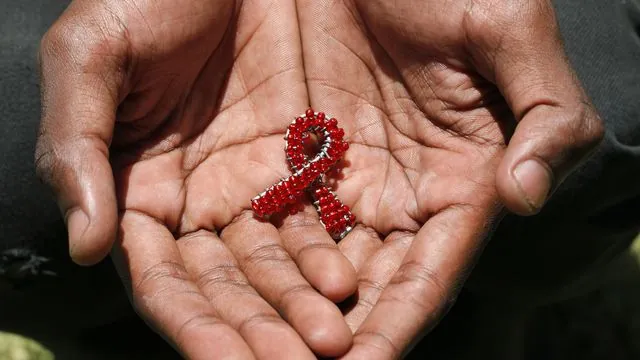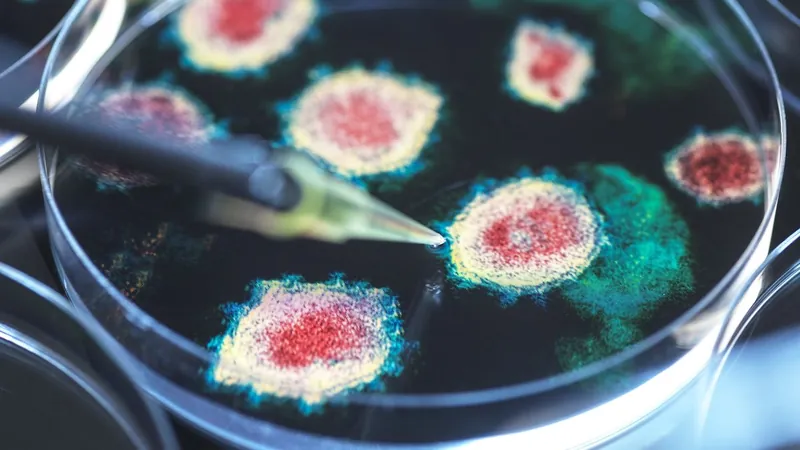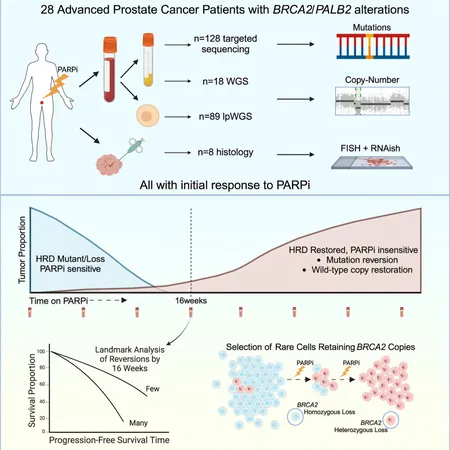
Breaking News: Major Advances and Ongoing Battles in the Global Fight Against HIV
2024-11-25
Author: Daniel
The fight against HIV continues to be one of the world's most pressing health challenges, with an estimated 39 million people living with the virus as of the end of 2022, according to the World Health Organization (WHO). That year alone saw a staggering 630,000 deaths attributed to HIV-related complications and a shocking 1.3 million new infections.
With the support of 11 UN cosponsors, UNAIDS is ambitiously aiming to end the HIV/AIDS epidemic by 2030. But what will it take to realize this goal? This article will highlight the significant hurdles in HIV treatment, groundbreaking prevention strategies, and the tantalizing possibility of a cure that could change everything.
Challenges in HIV Management
HIV is notorious for its resilience; as a retrovirus, it can embed its genetic material into the DNA of its host cells, posing a formidable challenge in treatment and effectively making a permanent cure elusive. If not managed properly, HIV can progress to acquired immunodeficiency syndrome (AIDS), a condition marked by severely weakened immunity. A person transitions to an AIDS diagnosis not only through a dangerous drop in CD4 cell counts but also by developing opportunistic infections that prey on the compromised immune system.
Dr. Emmanuel Ho, a leading researcher from the University of Waterloo, explains, “HIV can establish latent reservoirs within our body, lying dormant for months or even years. Once activated, these reservoirs can quickly replicate and overwhelm our immune defenses.” Despite advances in medicine, dormant HIV cells present a continual risk.
Currently, the primary treatment available is combined antiretroviral therapy (cART), a regimen using various antiviral drugs to suppress the virus. Dr. Jamie Mann of the University of Bristol highlights that, “cART works by targeting the virus at multiple stages in its life cycle, reducing its levels to undetectable levels and thereby protecting the immune system.” However, without a cure, ongoing treatment is non-negotiable, and the long-term use of cART presents problems such as toxicity and potential drug resistance.
Global Disparities in Access to Treatment
One of the most alarming aspects of the current HIV landscape is the stark global disparity in access to treatment. Approximately 10 million people living with HIV still lack access to potentially life-saving antiretroviral therapy. The latest UNAIDS report reveals that only 43% of children living with HIV receive necessary medical support. Alarmingly, over 25 million HIV-positive individuals reside in Africa, where gender inequalities exacerbate the crisis. In 2022, women in sub-Saharan Africa accounted for a staggering 63% of new infections, highlighting the urgent need for targeted interventions and education.
Adolescent girls and young women are particularly vulnerable due to systemic violence, stigma, and socioeconomic factors such as poverty and food insecurity. Globally, certain populations face even higher rates, with transgender individuals experiencing 14 times the prevalence of HIV compared to the general adult population.
Innovations in Prevention: A New Hope
On the frontier of research, Dr. Ho is leading efforts to develop innovative drug delivery systems to combat HIV. One promising avenue involves small interfering RNAs (siRNAs) packaged in nanomedicine, designed to inhibit gene expression that facilitates HIV infection. This groundbreaking approach aims to reduce the expression of CCR5—an essential co-receptor for HIV entry into host cells—thereby preventing infection.
By directly administering siRNAs to vulnerable regions like the vagina, researchers hope to enhance protection against sexual transmission of HIV. Though challenges remain, like efficient delivery through mucosal barriers, the ultimate goal is a method that provides near-total protection against infection.
Is a Cure on the Horizon?
Despite the current lack of a definitive cure, hopeful steps are being taken. Dr. Mann has recently co-led an international study examining a novel therapeutic called HIV-virus-like particles (HLPs) that can reactivate dormant HIV, making it vulnerable to cART and the body's immune attack. This innovative therapeutic has shown success in targeting and purging immune cells harboring latent HIV.
“HLPs resemble the HIV virus but are engineered to lack the ability to infect cells, thus promoting a safer method of treatment,” Dr. Mann explains. The promising results from initial studies are paving the way for eventual clinical trials aimed at ensuring universal accessibility for diverse populations.
The Road Ahead
What does the future hold in the fight against HIV? Research is advancing rapidly, with new treatments and potential vaccines on the horizon. However, to end the HIV epidemic, collective global action is imperative. Enhanced access to education, treatments, and preventative measures, especially for marginalized groups, is critical. There’s hope that with continued dedication and innovation, a comprehensive solution could emerge.




 Brasil (PT)
Brasil (PT)
 Canada (EN)
Canada (EN)
 Chile (ES)
Chile (ES)
 España (ES)
España (ES)
 France (FR)
France (FR)
 Hong Kong (EN)
Hong Kong (EN)
 Italia (IT)
Italia (IT)
 日本 (JA)
日本 (JA)
 Magyarország (HU)
Magyarország (HU)
 Norge (NO)
Norge (NO)
 Polska (PL)
Polska (PL)
 Schweiz (DE)
Schweiz (DE)
 Singapore (EN)
Singapore (EN)
 Sverige (SV)
Sverige (SV)
 Suomi (FI)
Suomi (FI)
 Türkiye (TR)
Türkiye (TR)